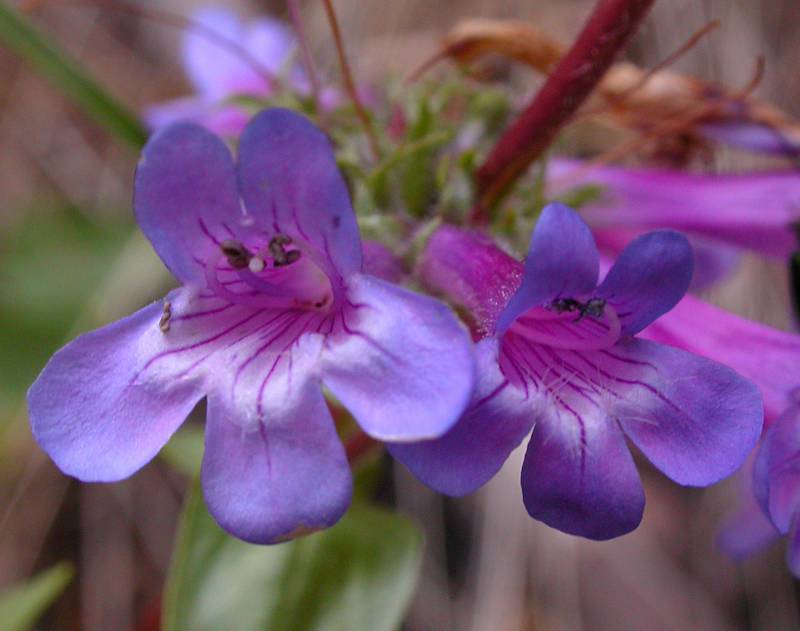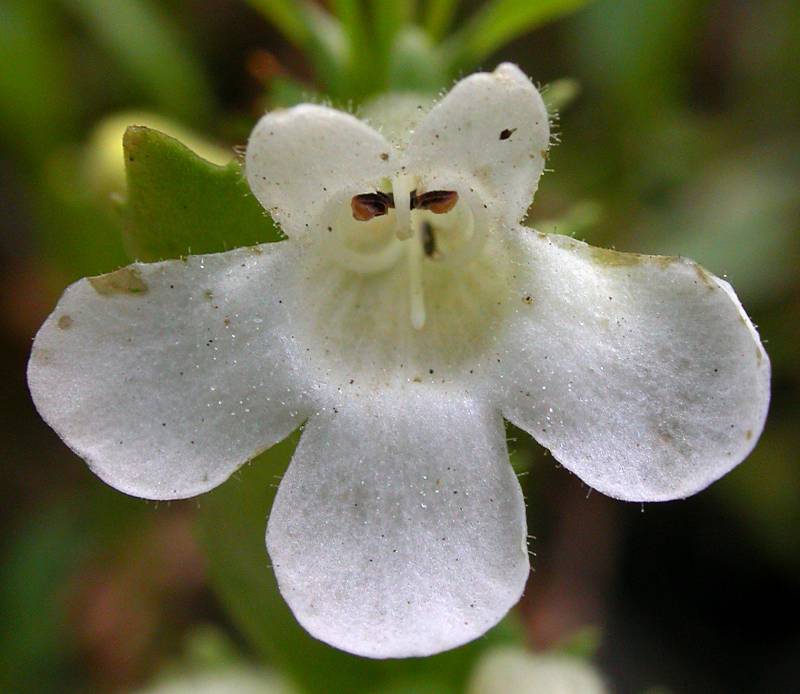|
Chelan beardtongue
|
hot-rock penstemon
|
| Plants tufted from a stout, branched, and woody base, the stems 1-4 dm. tall; inflorescence always glandular-hairy, the rest of the plant varying from glandular-hairy to glabrous. |
Plants with a much-branched, woody base, the flowering stems simple and erect, 2-6 dm. tall; plants usually glandular in the inflorescence, otherwise glabrous. |
Leaves opposite, usually sharply serrate, sometimes most of them entire; basal leaves well-developed, up to 10 cm. long and 2 cm. wide, the blades elliptic to ovate, equaling the petiole; cauline leaves sessile, triangular-ovate to narrowly lanceolate, smaller than the basal leaves. |
Leaves opposite, ternate, whorled or scattered, sharply toothed to entire; leaves on the short, sterile shoots oblanceolate to elliptic and short-petiolate, those on the flowering stems usually sessile and broad-based, up to 6 cm. long and 2.5 cm. wide. |
Inflorescence of several compact verticillasters; calyx 3-6 mm. long, the 5 segments broadly lanceolate; corolla deep blue or lavender, 11-16 mm. long, the tube slightly expanded, 2.5-5 mm. wide at the mouth, the throat paler and marked with guide lines, glandular-hairy externally, the raised portion of the lower lip bearded; pollen sacs glabrous, dehiscent throughout and becoming opposite; staminode with a bearded tip. |
Inflorescence of several verticillasters, often rather loose; calyx 2.5-6 mm. long, the 5 segments lanceolate; corolla dull whitish with some purplish lines within, sometimes washed with lavender, 8-20 mm. long, the tube narrow; staminode glabrous or hairy, not expanded toward the tip; pollen sacs 0.5-0.9 mm. long, glabrous, dehiscent throughout, widely spreading. |
Capsule 5-7 mm. long, glabrous. |
Capsule 3-5 mm. long. |
|
|
|
|
| May-July |
May-July |
| Open, rocky places from the valleys and plains to moderate elevations in the mountains, and in the scablands in Washington. |
Open rocky roadsides, hillsides, and rock outcrops, sometimes in dry meadows, lowland to middle elevations in the mountains. |
Occurring east of the Cascades crest in Washington; British Columbia to Washington.
|
Occurring east of the Cascades crest in Washington; British Columbia to California, east to Montana and Utah.
|
| Native |
Native |
| Not of concern |
Not of concern |
P. acuminatus, P. attenuatus, P. barrettiae, P. cardwellii, P. cinereus, P. confertus, P. davidsonii, P. deustus, P. ellipticus, P. eriantherus, P. euglaucus, P. fruticosus, P. gairdneri, P. glandulosus, P. hesperius, P. lyallii, P. ovatus, P. palmeri, P. pennellianus, P. procerus, P. richardsonii, P. rupicola, P. rydbergii, P. serrulatus, P. speciosus, P. subserratus, P. triphyllus, P. venustus, P. washingtonensis, P. wilcoxii |
P. acuminatus, P. attenuatus, P. barrettiae, P. cardwellii, P. cinereus, P. confertus, P. davidsonii, P. ellipticus, P. eriantherus, P. euglaucus, P. fruticosus, P. gairdneri, P. glandulosus, P. hesperius, P. lyallii, P. ovatus, P. palmeri, P. pennellianus, P. procerus, P. pruinosus, P. richardsonii, P. rupicola, P. rydbergii, P. serrulatus, P. speciosus, P. subserratus, P. triphyllus, P. venustus, P. washingtonensis, P. wilcoxii |
|
|
| |



